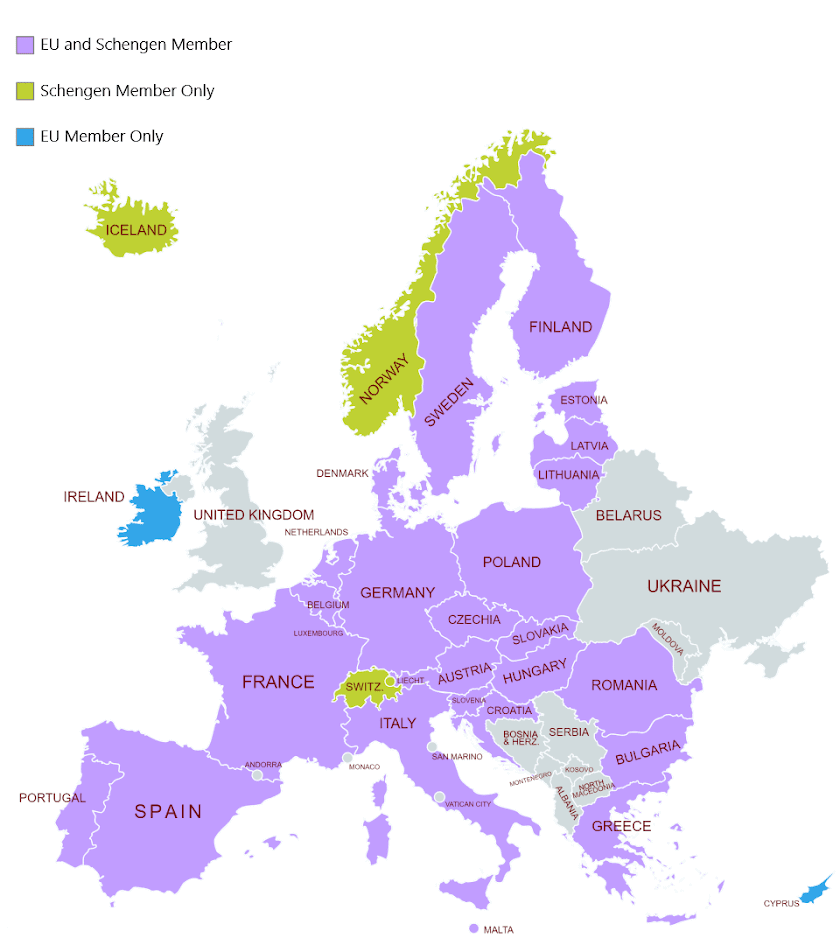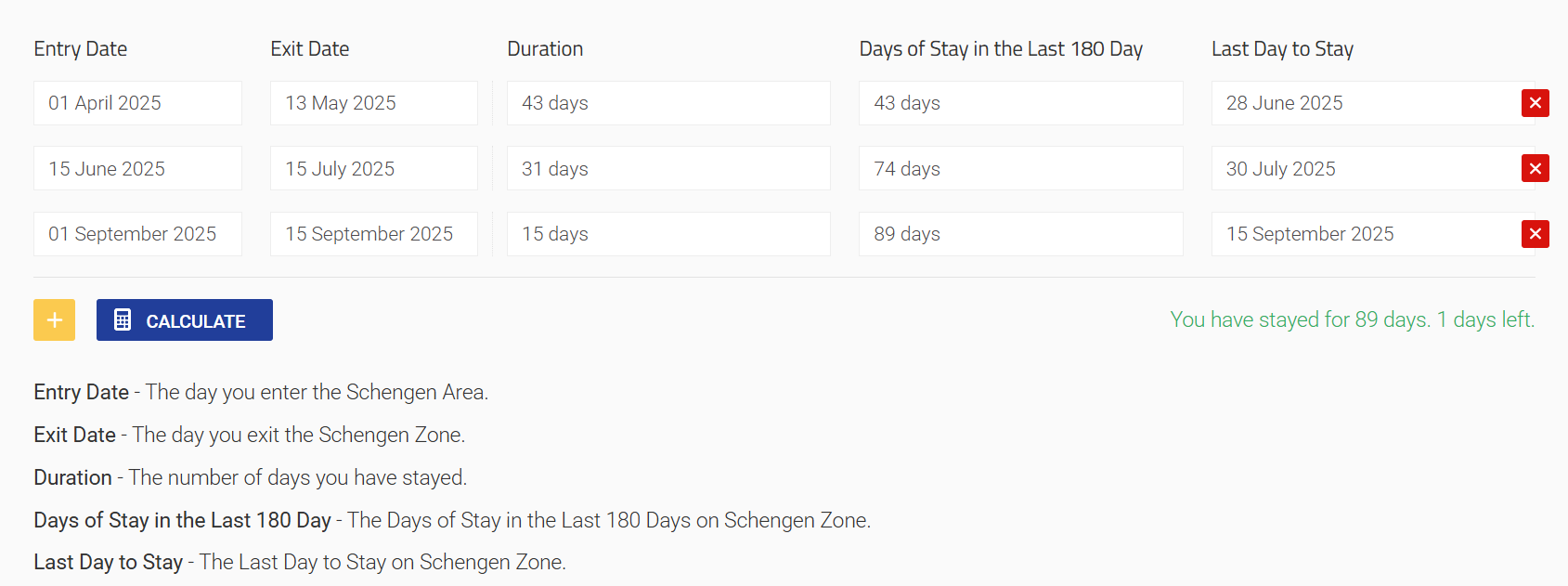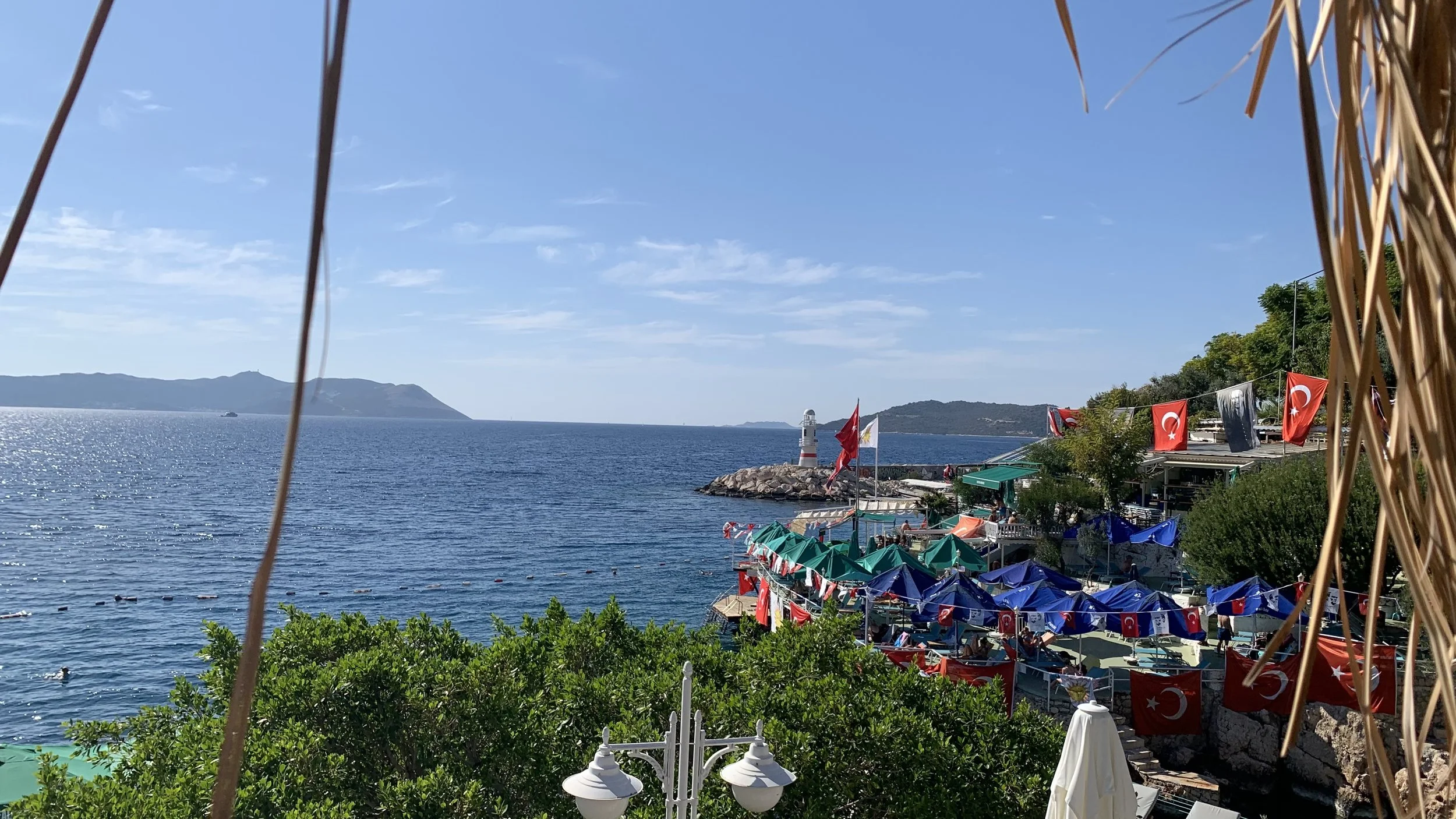Planning a long-term stay in Europe?
B2
Staying Legal: What you need to know when slow travelling in Europe.
Switzerland
Sweden
Spain
Slovenia
Slovakia
Romania
Portugal
Poland
Norway
Netherlands
Malta
Luxembourg
Lithuania
Lichtenstein
Latvia
Italy
Iceland
Hungary
Greece
Germany
France
Finland
Estonia
Denmark
Czechia
Croatia
Bulgaria
Belgium
Austria
Switzerland Sweden Spain Slovenia Slovakia Romania Portugal Poland Norway Netherlands Malta Luxembourg Lithuania Lichtenstein Latvia Italy Iceland Hungary Greece Germany France Finland Estonia Denmark Czechia Croatia Bulgaria Belgium Austria
Here’s What You Need to Know:
It’s called the Schengen Zone. But how does it work?
If you plan on travelling in Europe, particularly if you plan on a longer term stay, then you’ll need to know about the Schengen Zone tourist visa and how it works. I know that many people who go for a vacation in Europe likely have never even heard of it, and that makes sense. Most visitors to Europe coming for a short vacation don’t need to be aware of the Schengen rules.
Pursuant to Schengen regulations, non-EEA nationals are restricted to a maximum stay of 90 days within any continuous 180-day period, either without a visa or with a multiple-entry Schengen visa. On its face, it might sound simple enough, but it is frequently misunderstood by travellers, leading to overstays and potential penalties such as fines, deportation, or future entry bans.
What is a Schengen Visa?
The Schengen visa is a travel document that grants holders entry, transit, or stays in any of the 29 Schengen Area countries (listed below) for a total of 90 days within any 180-day period. These participating countries have agreed to abolish internal borders and implement common entry and exit policies
The Schengen Agreement was signed in 1985 in the small village of Schengen, Luxembourg.
How does the Schengen Visa work?
The goal behind the creation of the Schengen Visa was to facilitate seamless travel within participating European countries. It does this by abolishing passport and all other types of border controls for tourists and business travellers. That means travel between the countries in the zone is the same way you travel between states in the U.S. or provinces in Canada; it is considered purely domestic travel.
Do I need a visa?
If you’re traveling to Europe from a pre-approved country, which includes Canada, the United States, Brazil and Mexico among others, you do not need to apply for a Schengen Visa in advance of your travel to Europe. You get it automatically at the first port of entry; in almost all cases, this will be an airport.
Your passport is stamped upon arrival and you MUST also have it stamped when you are leaving the Schengen area so you have physical proof of your entry and exit.
Travellers can move between the 29 Schengen countries for up to 90 days, then must exit the zone (i.e. go to a non-Schengen country) for another 90 days. After 90 days outside of the zone you can come back into the zone and begin another stay of up to 90 days in the Schengen Zone. Some travellers have coined this type of travel as doing the “Schengen Shuffle”!
Countries In The Schengen Zone
Austria
Belgium
Bulgaria
Croatia
Czechia
Denmark
Estonia
Finland
France
Germany
Greece
Hungary
Iceland
Italy
Latvia
Liechtenstein
Lithuania
Luxembourg
Malta
The Netherlands
Norway
Poland
Portugal
Romania
Slovakia
Slovenia
Spain
Sweden
Switzerland
European Countries that are NOT in the Schengen Zone:
Albania
Armenia
Andorra* (Note that there is no airport in Andorra for international travellers and thus you will enter Andorra either from France or Spain, which are Schengen countries.)
Belarus
Bosnia & Herzegovina
Cyprus
Georgia
Ireland
Kosovo
Moldova
Montenegro
North Macedonia
Russia
Serbia
Ukraine
United Kingdom
Also NOT in the Schengen Zone:
Azerbaijan
Türkiye
How It Works
The 180-Day Period: The 180-day period is a rolling timeframe that begins on the day you first enter the Schengen Area. It is not limited to calendar months or visa validity dates. The key word here is rolling (as explained below)!
The 90-Day Calculation: During any 180-day period, you can stay in the Schengen Area for a maximum of 90 days. These 90 days can be consecutive or cumulative, depending on your travel patterns.
Cumulative Stay: If you enter the Schengen Area multiple times within the same 180-day period, your stay is calculated by adding up the total number of days spent in the region. Once you reach 90 days of stay within the 180-day period, you must leave the Schengen Area or obtain a long-stay visa or residence permit if you wish to stay longer.
Schengen Example 1
Let’s say you enter a country in the Schengen Area on January 1, 2025 and stay there for 30 days.
On January 30, you leave; you return on March 1st and stay for another 60 days, leaving on April 29.
Here in this example, you have used up your 90-day allowance (90 days within any 180-day period.) You must wait until the 180-day period “resets” before returning to the Schengen Area. Thus, the earliest you could re-enter the Schengen Area would be in 90 days; here that would be July 29, 2025.
Schengen Example 2
You enter the Schengen Area on April 1, 2025 for a six-week stay (43 days) in Romania, departing on May 13, 2025.
Here is what your Schengen calculation would look like on May 13th, as illustrated below:
You then travel to Istanbul, Türkiye, visiting several other places in the country over the next 33 days. Türkiye is not in the Schengen Area. On June 15, 2025 you take a ferry from Fethiye, Türkiye to the Island of Rhodes (Greece) and visit a few of the Greek Islands over the next 30 days, leaving on July 15, 2025 in order to fly home to Canada. Here is what your Schengen statistics look like now:
You then return to the Schengen Zone once more on September 1, 2025, and stay for 15 days in Italy, departing on September15, 2025.
In this hypothetical:
From April 1st to May 13th: 43 days
From June 15th to July 15th: 31 days
From September 1st to September 15th: 15 days
Total days within the 180-day period: 43 + 31 + 15 = 89 days
Essentially, you have spent 90 days within the last 180 days in the Schengen Area. Technically as noted in the illustration above you have 1 day left, which could be good in case your flight is cancelled and you need to leave the next day.
Know How To Count The Days Correctly
Note that the 90 in 180 day rule is a rolling period. The days in your oldest in time stay fall off, one day at a time. Here’s an illustration of what I mean. Say for example, using the current hypothetical, you came back to a Schengen country on September 29, 2025 and stay for a month until October 28, 2025. As noted in the diagram, your stay in the Schengen back in April/May 2025 no longer counts. As noted at the bottom right of the illustration, you have stayed for 76 days in the Schengen, and have 14 days left.
Schengen Travel Tip: Keep It Simple
As you can see, calculating how long you have been in the Schengen area can get complex if you are entering and existing frequently. If you are doing this, it is important to use the calculator to make sure you remain compliant.
If you want to make it easier on yourself, use this Schengen travel hack to live in Europe for a year or longer without the additional hurdle or expense of applying for residency: Spending 3 months in and 3 months out of Schengen keeps the math simple and efficient. Live in the Schengen zone for 90 days continuously, exit the zone for 90 days, and then re-enter through one of the Schengen countries. Take short hops to minimize the expenses of airplane travel.
It’s can be as simple as that! But always, always keep track of your dates so that you do not overstay and face potential fines or other penalties.
Not Sure? Use this Schengen Area Calculator to help with your planning.
We also recommend leaving a buffer of 3 to 5 days on both ends in case flights get cancelled or you can’t travel for whatever reason. For example, if you’re travelling through a Schengen country and your flight gets cancelled you’ll have to go through customs and that will add a day to your time within the zone.
Getting stuck in a Schengen country during transit due to adverse weather or another issue counts towards your time inside the zone. Therefore you might accidentally overstay your visa and you’ll face fines or other penalties, so plan carefully!
Simple Schengen Itineraries
Here are some simple country itineraries to get you started:
Western Europe
1) Start in Portugal and stay for 3 months or spend a month there, a month in Spain and a month in France. End your trip in Paris and take the Eurostar train to London at the end of the 90 days because the UK and Ireland are NOT Schengen Zone countries. Therefore, you can stay in one country or split your 90 days between them before returning to Schengen Zone.
The UK has a 6-month tourist visa for Americans, Canadians, Mexicans and other nationals; Brazilians can stay in the UK for three months without needing a visa. Ireland has a 90-day tourist visa for many nationalities, including Americans, Canadians, Mexicans and Brazilians.
Note: The United Kingdom has begun an ETA (Electronic Travel Authorisation) program, which is a pre-clearance to enter the UK. You will need to obtain that prior to entering the UK if you are not a citizen of the UK or the Republic of Ireland.
2) You can also go from north to south, ending your Schengen zone travel in Spain. From there, it’s a short flight to Morocco, where you can stay for 90 days on a tourist visa. This visa free stay is for many nationals including Americans, Canadians, Mexicans and Brazilians.
3) Your journey might began in Portugal and from there travel to Spain, Italy, and Greece. At the end of 90 days (keep a few days buffer) you can travel to Albania and Montenegro for your 90 days outside of Schengen. Once your 90 days outside are completed, you can begin again, visiting more countries in the Schengen zone.
Eastern Europe
Although the costs of living have risen worldwide, Eastern Europe still offers the possibility to save on expenses for those on a tighter budget, making it a good option.
Start your journey in Southern Italy in a place like Sicily or Puglia and then take a ferry to Greece. The port cities of Bari and Brindisi offer many ferry connections to Greece; Patras is a major port city for ferries from Italy.
When your 90 days are up, you can go to Albania, Montenegro, Bosnia, North Macedonia, Serbia, Kosovo or even Türkiye. Albania has a 1-year tourist visa for Americans and the other countries in this region offer 90-day tourist visas.
That means you can spend your entire 90 days in one country or split your time between multiple countries.
Final Thoughts
Understanding the intricacies of the 90/180 rule is essential for travel throughout Europe. Follow these guidelines and plan your itinerary accordingly. That way, you’ll take full advantage of your time in the Schengen Area while complying with immigration regulations. So get packing, and live the dream of European slow travel!
ETIAS?
A Schengen Visa is not to be confused with the new European Travel Information Authorisation System (“ETIAS”) that the European Union is unveiling in the first half of 2025. ETIAS is an authorisation for visa-exempt travellers to enter 30 European countries. It is not considered to be a visa but rather an entry requirement that will be done online. The claimed goal of ETIAS is to make the EU more secure from external threats.
Be A Traveller, Not A Tourist
B1
Not all tourists are travellers.
Travelling abroad can offer much more than just the chance to see some famous landmarks — it’s serves as an opportunity to gain a better understanding of both the world and your place in it. Chances are you’ve heard this oftern-used expression “Be a Traveler, Not a Tourist”. It was one that the late, great travel journalist and chef Anthony Bourdain was fond of. It’s true that most anyone who enjoys travel wants to go to the most popular destinations. And, once there, they rightfully wish to see the famous sites that everyone else also wants to see. Fair enough. But what sets the traveler apart from the tourist?
A traveller sees a destination as an opportunity. A chance to see the world around him/her from a different perspective. A chance to get out of one’s comfort zone and experience something new. Maybe that means trying new cuisine, or maybe doing something he/she doesn’t ordinarily do. But most of all, a traveller recognises this opportunity to learn and absorb new experiences. That doesn’t mean that travellers don’t also engage in touristic activities. You certainly wouldn’t go to Paris and not visit the Eiffel Tower or The Louvre; to Rome and not see the Colisseum, or to Istanbul and not see the Blue Mosque. That doesn’t mean you can’t shoot videos or take photographs. You can and I would argue you most definitely should. You’ll want to look back at these photos and reflect on the time spent.
For tourists,however, that is where it usually begins and ends: They have their list of “must-sees” and places where they have to “get that instagram shot”. For a tourist, travel almost seems like a checklist. “Yup, saw that, that and that.” Bought the t-shirt and the hat or some other tourist junk. Got that instagram moment, now on to the next place. A sort of mindless exercise, made even more overbearing to travelers when done in a tour group arrangement. Hermetically sealed in their own little travel bubble, surrounded by people who for the most part share the same customs, their experience lacks much authenticity.
Not everyone will want to be a traveller, and that’s fine. I also think the majority of people evolve from being a tourist to becoming a traveller. It’s the journey within the journey. Being a traveller is a privilege. You are a guest in someone else’s reality; you see people going about their daily activities, you experience their city, culture, nation, etc. Remember to treat people with respect and good will. You’ll often be surprised how much it is appreciated in return. There are millions of tourists out there, but travellers stand out. Be a traveller.
“Travel isn’t always pretty. It isn’t always comfortable. Sometimes it hurts, it even breaks your heart. But that’s okay. The journey changes you; it should change you. It leaves marks on your memory, on your consciousness, on your heart, and on your body. You take something with you. Hopefully, you leave something good behind.”







